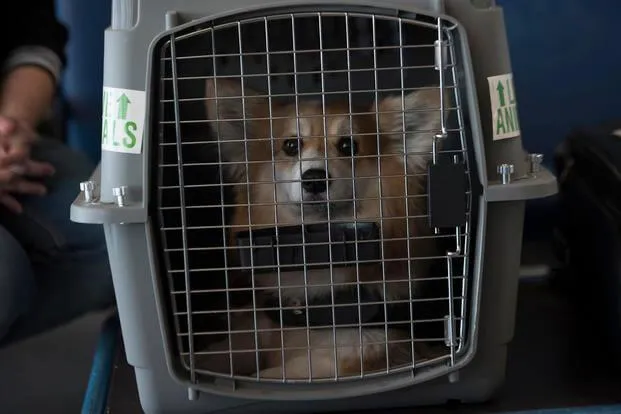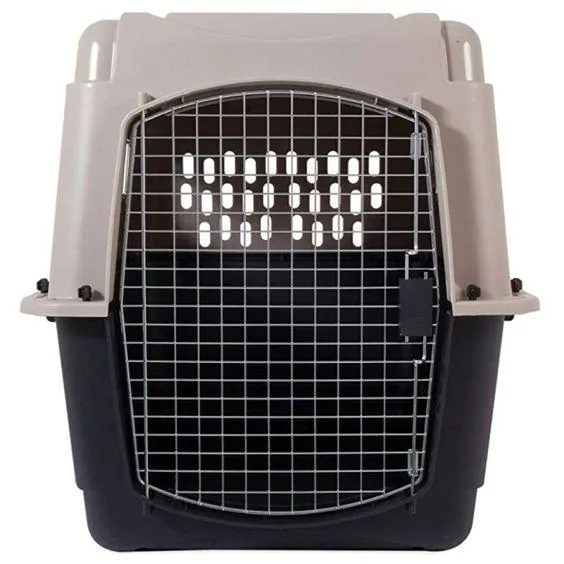The Complete Guide to Choosing the Right Pet Crate for Air Travel
If you’re like me and can’t stand the thought of being away from your furry friend, air travel with pets is definitely the way to go. But picking out the perfect travel crate can be kind of confusing with all the options out there. In this article, I’ll break down the main types of crates and give you my honest thoughts on what to look for based on my own experience flying with pets.
Soft-Sided or Hard-Sided?
The first big decision is soft-sided vs hard-sided. Soft crates are usually more affordable and kinda cute looking, but in my opinion they just don’t provide the sturdiness and security of a hard plastic crate. From what I’ve seen, airlines can be rough with baggage and you wouldn’t want Fluffy ending up with a squished nose! Hard crates also help muffle noise and reduce stress for nervous flyers. So unless your pet is super chill, I’d go with hard-sided forsure.
Size and Dimensions
Next up is finding the right size. Most airlines require the crate be big enough for your pet to stand up and turn around in, but no bigger than that. Measure your pooch or kitty and check the airline restrictions – nothing worse than showing up to the airport with an illegal-sized crate! A common size is airline-compliant Medium 17″ x 12″ x 11″. But amazingly, I met a guy once who tried squeezing his Great Dane into an Extra Small. Now that’s just asking for trouble if you ask me!
Durability
The toughest crates are made from thick plastic that can withstand baggage handling systems without breaking. Look for reinforcement on the corners, sides, doors, and roof. Try flexing it a bit – it shouldn’t bend or feel flimsy. Hard plastic is best but you can find more affordable composite crates that are decent too. Just beware of cheap thin plastic or wire crates – those will basically disintegrate under the weight of five big suitcases piled on top. And that’s no bueno for Fido!

Ventilation
Proper ventilation and airflow is mad important too, yo. Hot, stuffy crates are lame for pets and people alike. Go for crates with multiple plastic vents along the sides and top. Mesh panels are a good choice. Avoid crates sealed up tight with no holes. You want some breathability in there but not so much your pup can stick their nose out and distract the pilot! Balance is key, aight?
Doors and Locks
The door mechanism should feel secure but also allow easy access when needed. Look for spring-loaded latches that snap closed firmly on both sides plus a metal or plastic tie-down clip to lock it shut. Sliding, bolting, or combination door styles work great too. Just stay away from flimsy snap locks or folding door designs – those will pop open mid-flight for sure. And nobody wants the mental image of Mittens free-falling from 30,000 feet with no coordinating safety vest, amirite?
Comfort and Amenities
- Padded or lined interior – This helps nervous pups feel cozy. Look for thick foam or fabric padding on the floor.
- Removable cushions or blankets – These provide your pet comfort while also making cleaning a breeze.
- Snack bowl/water bottle holder – Long flights mean drinks and snacks. Built-in bowls prevent spills.
- Name/ID tag holder – Essential for identifying your pet if separated from crate.
- Collapsible design – Handy for easy storage at home when not traveling.
Some top-of-the-line crates even have little windows, treats dispensers, or potty pads. Now that’s living in luxury, am I right? But the basics above should suffice for most flyers. Avoid bare-bones wire crates with zero padding – not a good scene for long hauls in my opinion.
Additional Tips
A few more pro tips before we wrap this up. Bring treats, toys, and your pet’s favorite blanket to help them feel at home. Consider airline-approved sedatives from the vet for anxious flyers too. Make sure their collar and ID tags stay ON at all times – you never know when they could wiggle free! Also, check dimensions against airline size rules, then practice going in and out of the crate beforehand so it’s not a shock on travel day. With the perfect setup, flying with pets can actually be kinda fun! Just don’t try to sneak Bessie the Cow on board – I learned that lesson the hard way…

Choosing the Right Crate for You
So in summary, think about size, material, ventilation, comfort features, and durability when picking out a travel crate. Avoid flimsy or risky designs. And as always, check airline policies first. With the right setup, even nervous Nelly pets can cruise through security like pros! Let me know if you have any other questions – happy to help more Fido fans take flying to the next level. Bon voyage and bones appetit!
Chosing the Right Pet Crate for Air Travel
| Crate Size | Appropriate Pet Size | Advantages | Disadvantages |
|---|---|---|---|
| Small (up to 15″L x 11″W x 11″H) | Small Dogs/Cats | Lightweight, easy to carry | May feel cramped for larger pets |
| Medium (18″L x 13″W x 13″H to 21″L x 17″W x 17″H) | Medium Dogs | More space, still portable | Heavier than small crate |
| Large (24″L x 18″W x 18″H to 27″L x 21″W x 21″H) | Large Dogs | Plenty of room, comfortable for pets | Heavy and bulky for air travel |
| Collapsible | All sizes | Saves space when not in use, easy to transport when empty | May not be as sturdy as rigid crates |
| Ventilation | All pets | Allows air flow to prevent pets from overheating | Openings could allow escape |
FAQ
-
Will my pet be safe traveling in a crate on an airplane?
Basically, as long as the crate meets airline requirements, it’s usually alright to transport small pets like dogs or cats in crates during air travel. The cabin is pressurized and temperature controlled. However, make sure your furry friend has food, water, and is comfortable during the journey.
-
What size crate do I need?
Airlines have rules about crate size. You’ll need one that’s large enough for your pet to stand up, turn around, and lay down in normally. But not too huge, right? Pick a crate your pup can feel cozy in without tons of extra space. Air travel is kinda stressful as is.
-
Can I take my pet’s crate as a personal item?
On most flights, you’re allowed one personal item like a purse or backpack in addition to your luggage. Basically, if the crate fits under the seat in front of you, the airline will let you bring it onboard as your “personal item”. Always check rules first to avoid surprises though.

-
Where does the crate go during the flight?
Due to limited space, pet crates usually need to be stored under the seat in front of the passenger. However, on occasion, you may get lucky and the overhead bin is empty. Then again, hopefully your friend won’t be too annoyed if you knock their knees with the crate!
-
What if my pet is scared of traveling?
Some pups get spooked by all the noises and shaking during take-off and landing. Ask your vet about calming supplements or natural remedies you can give your furry friend a few hours before the flight. Being in a familiar crate may also help ease stress. Still, every pup is different, right?
-
Is it better to sedate my pet?
Unless your vet recommends it due to health issues, sedating pets for air travel is controversial. It may help them stay calm, but also prevents them from communicating if something goes wrong. Crating, training and other calming methods are likely safer bets than unnecessary drugs. What do you think – is that fair?
In conclusion, air travel in a crate can work well for small pets if properly prepared and stress is minimized. However, nervous flyers might be better driving or using pet transportation companies instead. I wonder, does anyone have any memories of traveling by air with critters when they were kids? You guys have given me some nostalgia!

